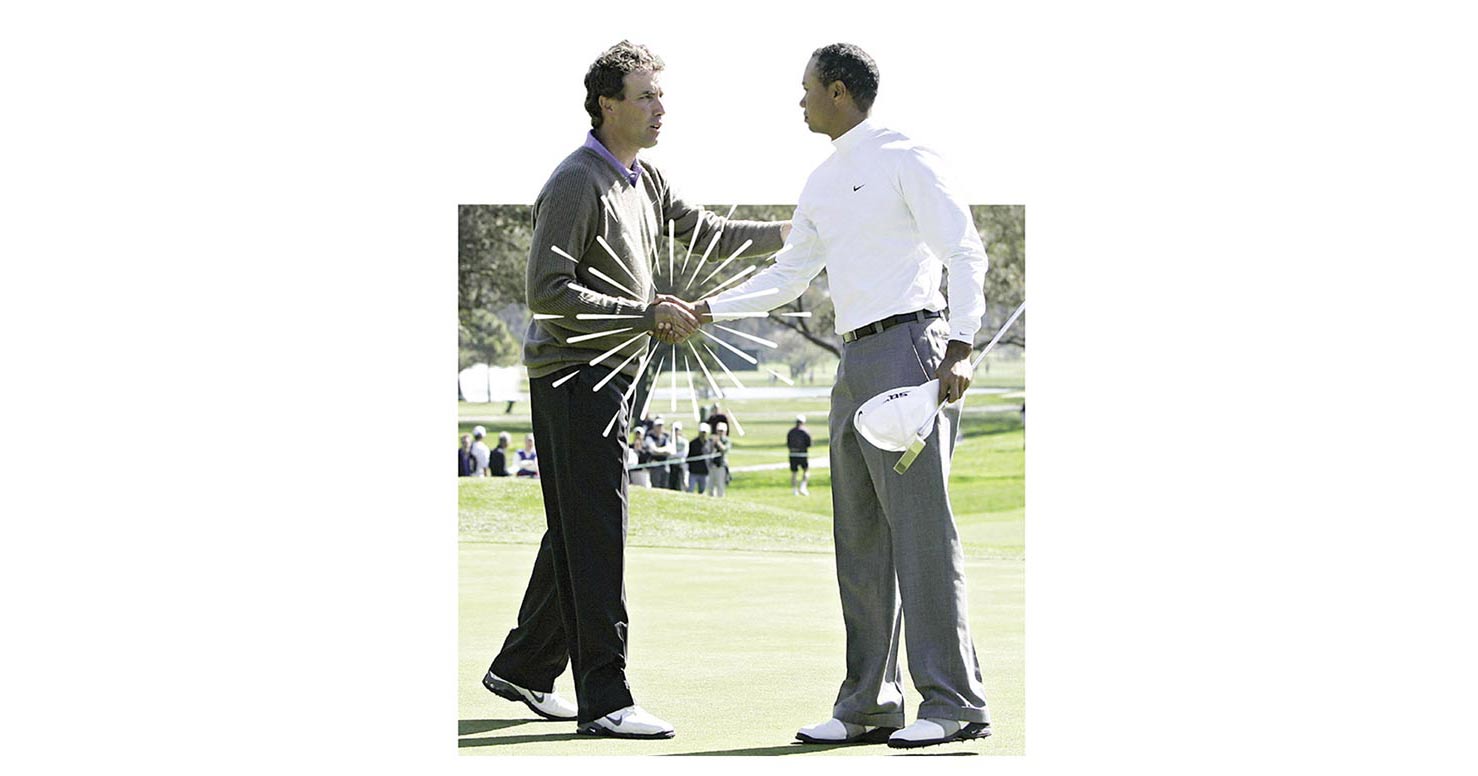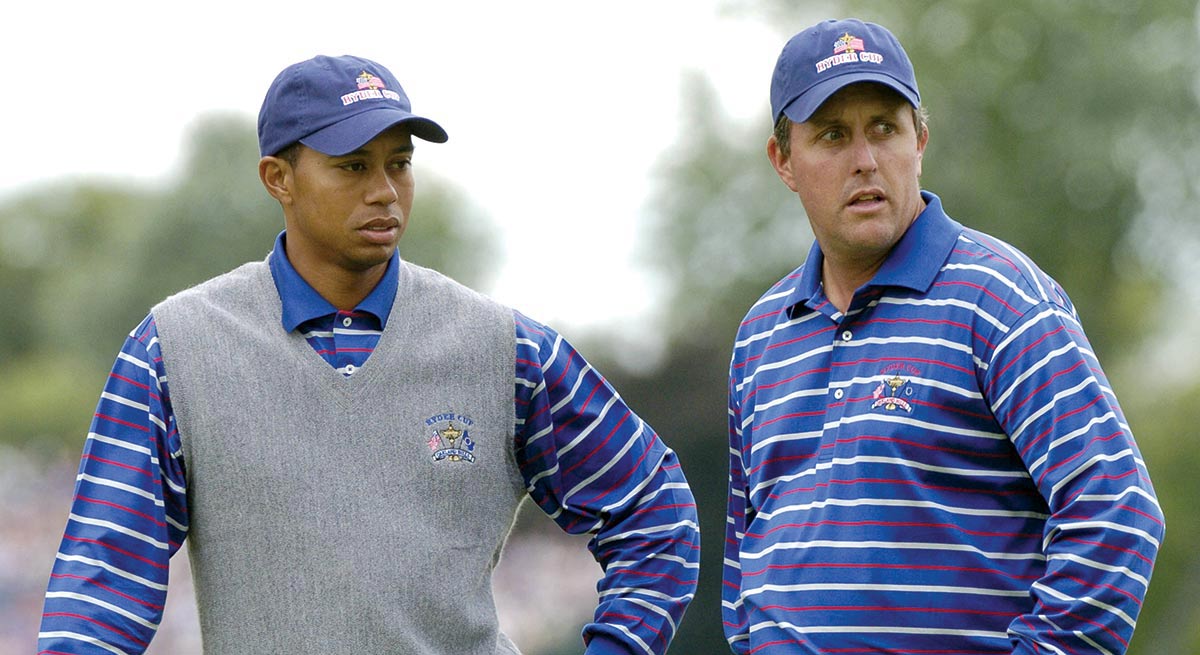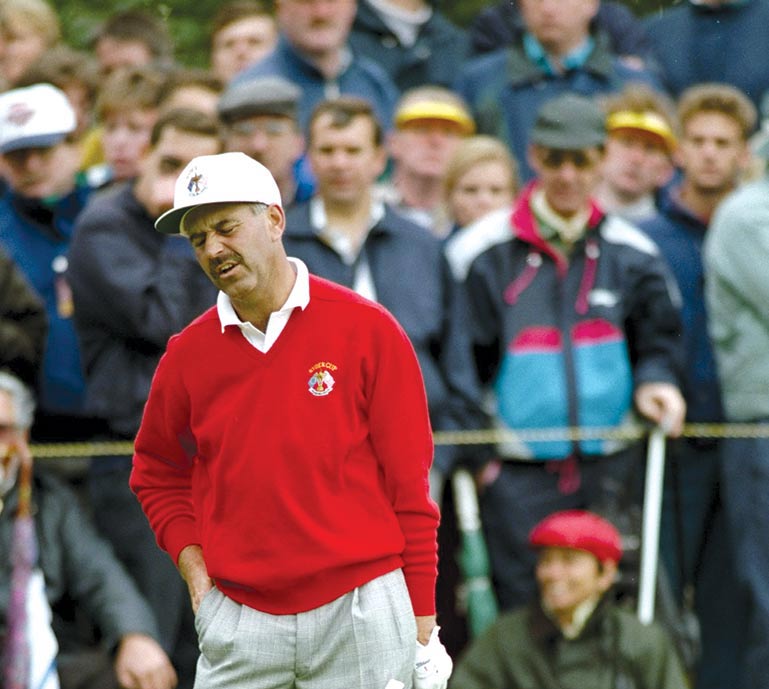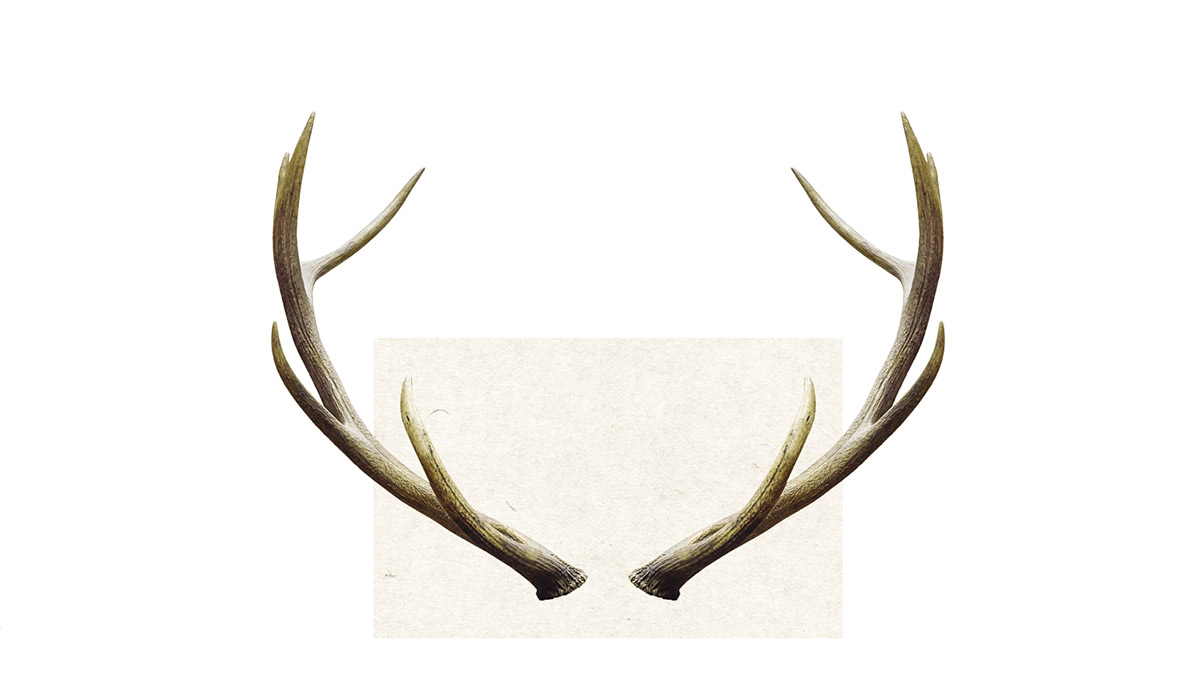
s 2021 approaches the end-of-year awards season, the prize for the most pointless distraction in golf must be shared between the incredible sulks, Brooks Koepka and Bryson DeChambeau. Adult males in their athletic prime, their back-and-forth has seemed to be a playground dust-up, just without the bumps and bruises. They should have received after-school detention but got off the hook—after creating a social media frenzy. With the pair confirmed for the next episode of The Match this “feud” will come to a head of sorts, probably in front of a disproportionate TV audience. It’ll be “wheelbarrow time,” as Ernie Els once called it. Skepticism of the spat is fueled by the $40 million made available by the PGA Tour’s new Player Impact Program, which rewards PGA Tour members who generate exposure for the tour—though no one’s exactly sure what that means. So is Koepka–DeChambeau more Shaq–Kobe or Rocky–Apollo? Who knows, but one thing is for sure: the Brooks and Bryson tiff pales compared to a few other relationships that found the rough. Consider...

Paul Azinger recently spoke to Golfweek about his interactions with Spanish legend Seve Ballesteros, saying, “We were never what Brooks and Bryson are: No.1 and No.2 on the list of most interesting players in today’s game.” We beg to differ— Seve versus ’Zinger had way more spirit and personality—even if, as Azinger had it, “everyone had a back-and-forth with Seve.”
The tension might have begun at the 1989 Ryder Cup, when Ballesteros asked Azinger if he could replace a scuffed ball on the green and the American said no, the ball was fine. At the next Ryder Cup Seve returned the favor, accusing Azinger and his partner Chip Beck of changing the type of ball they were using. The moment cost the Americans their focus and might have contributed to their loss. At the same Ryder Cup, Azinger also accused Ballesteros of making noise in his backswing, prompting Seve to respond, “Everybody knows I have allergies.” The coals were stoked two years later at Kiawah Island when Seve labelled Azinger a “liar,” then Azinger called Seve “the king of gamesmanship.”
The Spaniard ultimately made his opinion clear as day, commenting that “The American team has 11 nice guys… and Paul Azinger.”
Entertaining surely, these were the building blocks of the modern Ryder Cup, let there be no doubt.

Before their knock-out match at the 2006 WGC Match Play, Canada’s Stephen Ames said of Tiger Woods: “Anything can happen, especially where he’s hitting the ball.” Unfortunately for Ames, he is remembered more for what happened next than he is for his four PGA Tour wins: Tiger beat him 9&8, having missed a putt on the 10th green to make it a perfect 10&8.

Watching Phil Mickelson and Tiger Woods at their prime was a joy: one exceptional golfer pushed by a norm-destroying force to be even better. In the semi-controversial HBO documentary, Tiger, Woods apparently used to look at Phil in “disdain”—unimpressed by Mickelson’s perceived poor work ethic. A publicly tense rivalry came to a head of sorts at the 2001 Masters when Mickelson and Woods were paired on Sunday. On one tee shot, Woods followed a great drive by Mickelson with an even longer 3-iron, after which Phil reportedly asked Tiger if he normally hit a 3-iron that far. Woods said he usually hit it further, as Tiger’s former caddie Steve Williams has it, adding, “I could sort of sense that Mickelson was feeling a bit dejected… That shot just deflated Phil’s ego.”
The relationship was not helped at the 2004 Ryder Cup [left]. Woods was world No. 1, Mickelson No. 2, and U.S. skipper Hal Sutton thought they would be “as strong as old rope” as a pairing. They promptly lost the opening fourball match on the Friday morning, Sutton stuck with them and the pair lost their afternoon foursomes too. Mickelson had recently commented that Woods was playing with inferior Nike clubs, yet it was Mickelson who wildly sliced his drive on 18 into an unplayable lie, to put the final nail in this pairing’s coffin. Europe won that Ryder Cup at Oakland Hills by a record margin.
European captain in 2004, Bernhard Langer, later told Kingdom: “The last thing you want is to put players together who don’t like each other. You can’t expect them to carry each other and to encourage each other.”
Woods deflated Mickelson at the 2001 Masters, out-driving him with a 3-iron

When asked how Walter Hagen might do in the 1933 U.S. Open, a younger Gene Sarazen replied, “Why, they don’t have rocking chairs any more in golf. How can Hagen win?” The older champ tied for fourth at four over while Sarazen stumbled to a 15-over finish. At the end of play on Sunday, a very young caddie reportedly brought a small rocking chair to Sarazen, offering that “Mr. Hagen sent this out. He thought you might need it.”
England’s Mark James was nothing if not a combative Ryder Cup golfer. Prior to the 1993 Ryder Cup he said: “The only thing that scares me is the Americans’ dress sense.” James would lose three points from three matches as the U.S. team won 15-13 at The Belfry.

At the 1967 Ryder Cup, U.S. captain Ben Hogan introduced his team as “the 12 best golfers in the world.” Hogan’s confidence was vindicated as his team, including Arnold Palmer, Billy Casper, Gardner Dickinson and Gene Littler trounced the GB&I visitors 23 ½ to 8 ½.
In his 1991 autobiography, To Be The Best, Gary Player didn’t exactly praise Tom Watson when the Black Knight wrote that he once thought, “Tom, you aren’t half the man.” Watson had already referred to Player as “the little man,” and twice accused him of wrongdoing. At an early 1980s Canadian Open, Watson accused Player of illegally fixing a spike mark, while at the 1983 Skins Game, Watson accused Player of, as the Washington Post reported, “flattening out a rooted leaf directly behind his ball before attempting a delicate chip shot on the 16th hole—a hole where $120,000 was at stake.” Player denied breaking any rule and later, for his part, suggested that Watson should return his 1977 Masters and Open Championship titles as both were won with non-conforming grooved irons—a violation that wasn’t uncovered until years after the events. One has to wonder what thoughts were flowing as Watson slipped the Green Jacket onto Player in 1978, but it’s worth noting that the pair apparently never meant for their tension to go public.

There’s no shortage of spats from which to choose when it comes to Hall of Famer Vijay Singh, the No.1-ranked golfer for 32 weeks of his career, and it’s fair to mention that he’s otherwise a fairytale story of sorts who came from incredibly modest circumstances and worked ridiculously hard to achieve greatness. But, a decade following his disparaging comments regarding Annika Sorenstam competing in the 2003 Colonial (look it up if you don’t know), a peculiar brouhaha emerged when the PGA Tour launched an investigation of Singh for doping. Singh had admitted in a magazine article to using “deer antler spray,” which apparently contained the Tour-banned IGF-1 growth hormone. The Tour later dropped its investigation and issued a statement saying it had “no reason to believe that Mr. Singh knowingly took a prohibited substance” after “new information” from the World Anti-Doping Agency “deemed it only fair to no longer treat Mr. Singh’s use of deer antler spray as a violation of the Tour’s anti-doping program.” Singh wasn’t done, however, and filed a lawsuit alleging the Tour had created “public humiliation and ridicule” for him. The slightly askew chapter wasn’t sorted until 2018.
This is not as much trash talk as it is plain razor wit. In the 1972 World Match Play at Wentworth, Lee Trevino was drawn against Tony Jacklin. Jacklin wasn’t in the mood for Trevino’s famous verbal stream of quips. He said, “Lee, I really don’t feel like talking today, if that’s okay, so I’m probably not going to say much.”
In a flash, Trevino replied: “Hey, Tone, you don’t need to talk, just listen.”
There was no stopping Trevino, and Jacklin couldn’t find the answer that day either, losing at the last hole.
Follow Us On


| Cookie | Duration | Description |
|---|---|---|
| cookielawinfo-checkbox-analytics | 11 months | This cookie is set by GDPR Cookie Consent plugin. The cookie is used to store the user consent for the cookies in the category "Analytics". |
| cookielawinfo-checkbox-functional | 11 months | The cookie is set by GDPR cookie consent to record the user consent for the cookies in the category "Functional". |
| cookielawinfo-checkbox-necessary | 11 months | This cookie is set by GDPR Cookie Consent plugin. The cookies is used to store the user consent for the cookies in the category "Necessary". |
| cookielawinfo-checkbox-others | 11 months | This cookie is set by GDPR Cookie Consent plugin. The cookie is used to store the user consent for the cookies in the category "Other. |
| cookielawinfo-checkbox-performance | 11 months | This cookie is set by GDPR Cookie Consent plugin. The cookie is used to store the user consent for the cookies in the category "Performance". |
| viewed_cookie_policy | 11 months | The cookie is set by the GDPR Cookie Consent plugin and is used to store whether or not user has consented to the use of cookies. It does not store any personal data. |